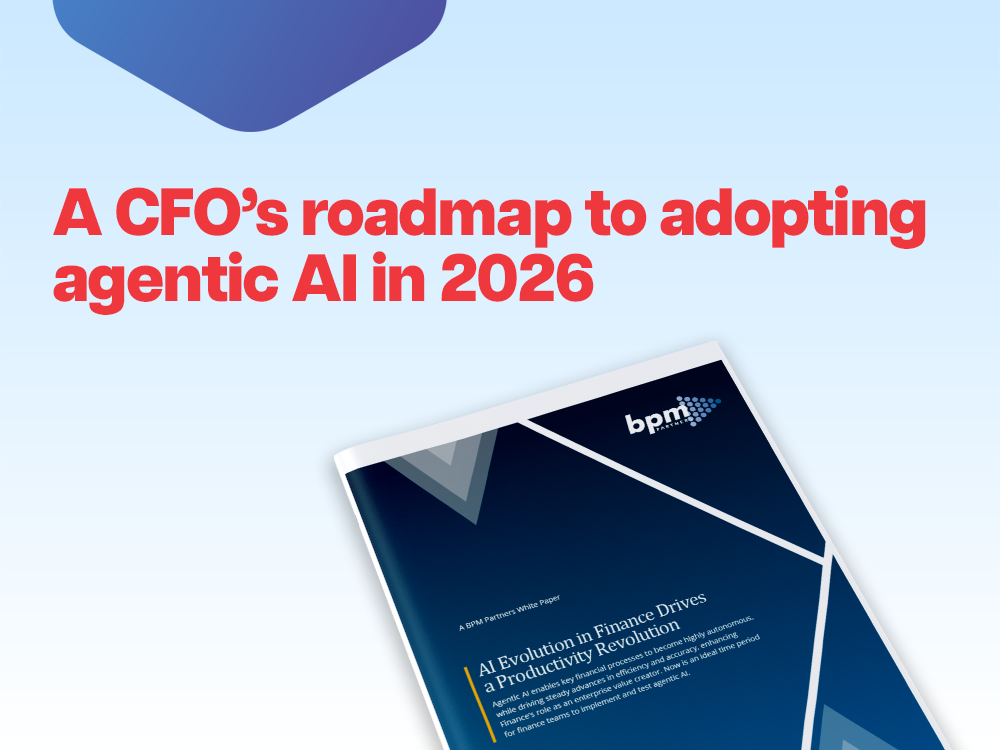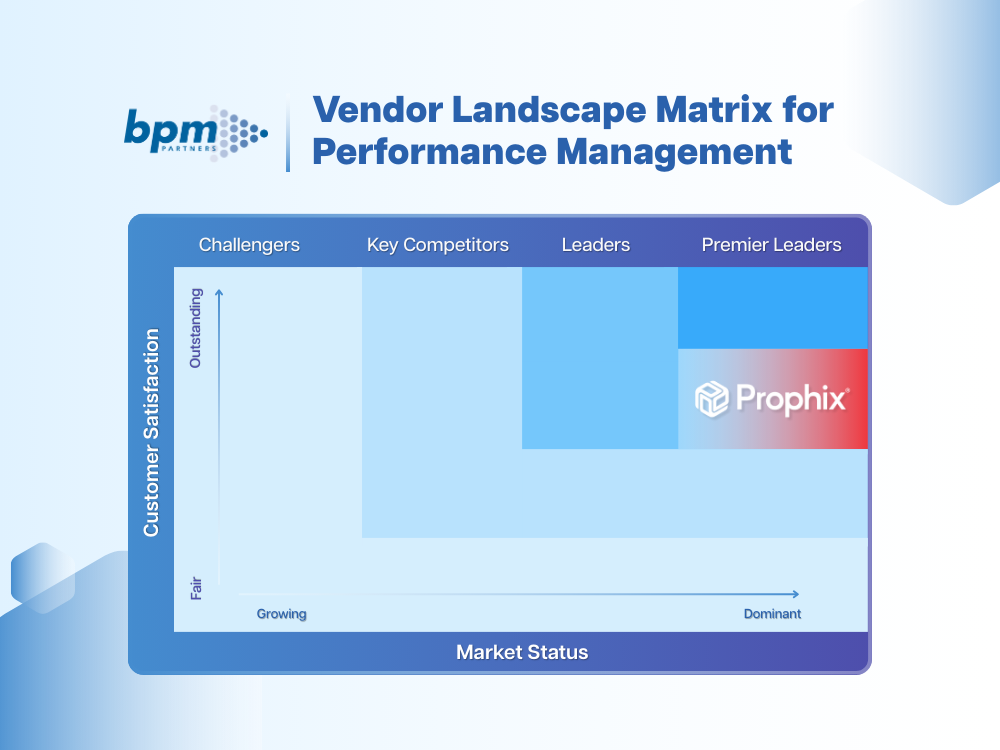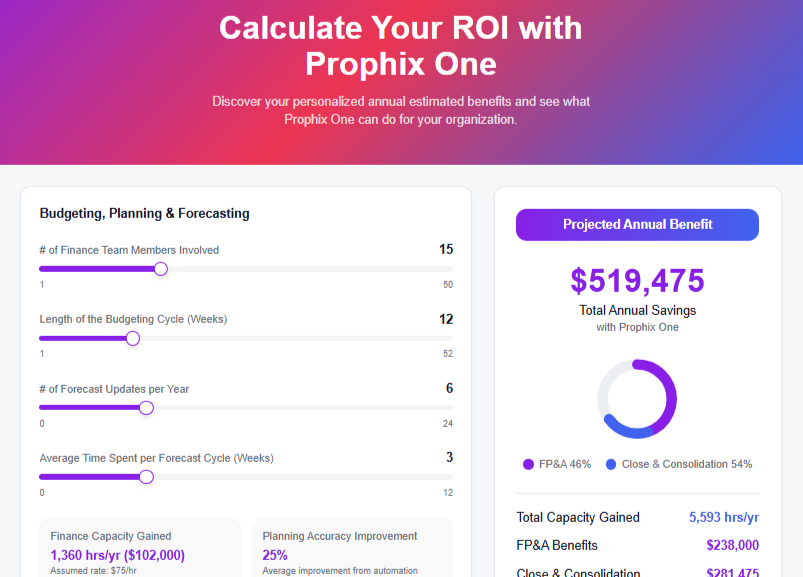Download Analyst Report
Strategic planning and reporting for your biggest investments
Find out how strategic CapEx planning drives growth and optimizes your financial reporting.
July 31, 2025When it comes to running a business, it’s important to plan out your outflows: what you need to ‘spend to grow’ via capital expenditures (CapEx), and what you need to spend to ‘keep the lights on’ via operating expenses (OpEx).
‘Spending to grow’ via capital expenditures is a major area of strategic investment for organizations, and a delicate balance act for finance leaders when it comes to planning out major investments as part of multi-year plans. The balancing act requires finance leaders to juggle:
What to purchase
The right time to purchase
The right quantity to purchase
The asset’s tie-in back to long-term growth strategies (like entering new markets)
The liquidity impact
The overall impact on the company’s debt position
While labor planning is the largest operating expense the average company plans for, accounting for on average 30% of costs, capital expenditures could make up anywhere from 5-15%. There is a certain level of predictability to OpEx planning, whereas capital expense planning has a strategic edge.
Why is it important to consider CapEx planning as a strategic lever?
Although the underlying principles are the same, CapEx planning might look different for a service-based company, versus a goods-producing company. A goods-based company might weigh up the decision to build a new facility to service a new geography.
A service-based company might investigate a digital transformation that streamlines the way their employees work. In both cases, the company is moving a strategic lever on their capacity to serve future demand. Screening projects through both a financial and operational lens helps companies prioritize the right investments before capital is committed.
What’s the difference between CapEx and OpEx?
You can think of CapEx and OpEx as opposites. OpEx refers to the costs to run a business, such as everyday expenses like salaries, rent, utilities, etc., while CapEx is money spent to upgrade, acquire or maintain physical assets (think: equipment, buildings, property).
CapEx purchases aren’t expensed immediately like operating expenses are, rather, they’re depreciated over time based off the useful life of the underlying asset. The intent of capturing CapEx in this manner is to quantify how the asset itself is aging – how it’s being used relative to time passing. Also, asset purchases are quite large, so recording their one-time purchase as an expense would not only skew your bottom line in that period but not accurately represent the way the asset is ‘working’ to create value for your business.
This directly contrasts with how operating expenses are treated on the financial statements, where an OpEx is directly attributed to a period, like the rent for a certain month, or the total payroll costs for a given month.
Where does CapEx appear in your financial statements?
CapEx-related activity is not isolated to the income statement as a depreciation expense. CapEx lives on each of the 3 major financial statements in distinct ways. Circling back to that very first purchase, if it doesn’t get recorded as one massive expense on the income statement, where does that original amount live? The value of the original capital purchase sits on the balance sheet as an asset. Any subsequent periodic depreciation expense is booked against the asset value according to double-entry accounting, which is how the decrease in value of the asset is captured over time.
But there’s still one more financial statement where CapEx has a presence: the indirect cash flow statement. Because a depreciation expense isn’t a true expense (i.e. it wasn’t paid for by credit or cash) it needs to be added back within your indirect cash flow statement, since it would be incorrect to say that X dollars in depreciation expense brought down your ending cash.
So, it plays a role in accurately capturing your cash at the end of the period, or your true liquidity position. This unique quality of CapEx, where it plays a role in your debt position, liquidity, and bottom line, makes it a unique segment of your GL to plan for.
What’s the best method to plan CapEx?
Given the flurry of accounting activity that is associated with CapEx, it’s not a far stretch to see that planning CapEx from the bottom-up is the way to go. What this means is having a roster of your existing assets, all the assets you plan to buy, and any associated variable that would be required to push planned data into your corporate plan:
Original purchase cost
Useful life
Depreciation method (straight-line or double declining)
Acquisition date
Asset class
All these parameters and more are required to point to the calculated values of:
Depreciation expense
Asset value
Accumulated depreciation
And interest expense to the correct general ledger account, whether that be sitting on the balance sheet, income statement or indirect cash flow account.
Driving the output of your CapEx plan from the asset level is ultimately what drives accuracy in your overall budget. This way, when you have a planned working capital ratio, or cash ratio to compare to actuals, you’re confident that your CapEx inputs are grounded in tangible, traceable investments, ensuring the downstream impact on liquidity and capital structure is both visible and justifiable, rather than based on abstract top-down estimates.
How to plan CapEx: calculations and all
The following calculations are meant to be applied at a monthly level and are calculated at the individual asset level.
Net Asset Cost = Gross Asset Cost - Accumulated Depreciation
Where Accumulated Depreciation is the sum of the cumulative depreciation expense which can be calculated in a few methods:
Straight Line Depreciation = (Gross Asset Cost – Asset Residual Value])/ Useful Life
Double Declining Depreciation = (2 / Useful Life in Years) x Net Asset Cost at the Beginning of the Month / 12
The double declining method is typically used for assets that depreciate quicker in their early years, like technology and vehicles. You don’t subtract salvage value, but you stop depreciating once you reach it.
Maintenance Cost = Maintenance Amount per Asset x Monthly Maintenance Schedule
The following schedules are helpful to drive the above calculations:
A schedule that outlines the useful lives of various asset classes.
A schedule that outlines the depreciation method to be used (i.e. straight line or double declining)
A simple 1 or 0 Boolean schedule to flag when maintenance is to occur.
What happens after the CapEx plan is built?
Once your CapEx plan is built, grounded in asset-level detail and supported by solid financial assumptions, the next step is to monitor and report on those investments throughout the year. Capital planning does not end with approval. It continues through consistent capital asset tracking and depreciation reporting.
With a clear reporting structure, you can ensure each asset is depreciating as expected, tie actual spending back to the original plan, and maintain visibility into how CapEx is affecting your income statement, balance sheet, and cash flow. Explore what this reporting could look like at your company.
Discover what’s possible with Marketplace Explorer





